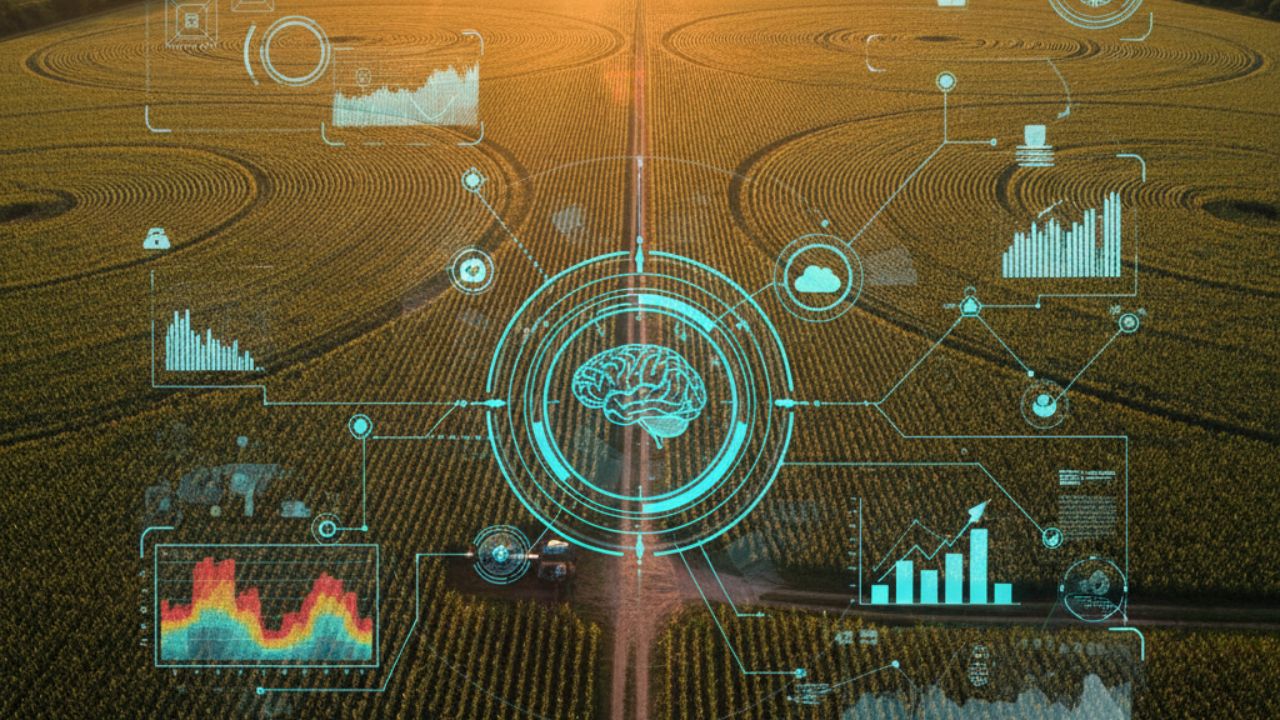
Agriculture is experiencing an unprecedented transformation through the convergence of precision farming technologies and big data analytics. This powerful synergy is redefining how farmers make critical decisions, from planting to harvest, optimizing every aspect of agricultural production with a level of accuracy never before possible.
Precision agriculture represents a farm management approach that uses information technology and extensive data analysis to observe, measure, and respond to inter and intra-field variability in crops. By integrating big data into this process, farmers can analyze complex patterns that were previously invisible or impossible to process manually.
This approach goes beyond simple data collection. It's about transforming millions of data points into actionable decisions that can make the difference between a successful harvest and significant losses. From field sensors to satellite imagery, every data source contributes to creating a detailed map of agricultural conditions.
The implementation of IoT sensors in the field has revolutionized how we collect agricultural data. These devices, similar to those being utilized in American farming IoT projects, can continuously measure variables such as:
These sensors generate constant streams of data that, when properly processed, provide invaluable information about the exact state of each field zone.
High-resolution satellite imagery allows farmers to monitor vast expanses of land with unprecedented frequency and detail. Through spectral analysis, it's possible to detect:
This technology perfectly complements the drone systems used for irrigation in California, creating a complete ecosystem of aerial and ground monitoring.
Modern weather stations not only record basic climate data but also use machine learning algorithms to predict future conditions with high accuracy. This information is crucial for:
Big data enables the creation of sophisticated predictive models that can anticipate yields, identify risks, and optimize resources. Machine learning algorithms, like those explored in artificial intelligence systems for agriculture, process years of historical data alongside real-time information to generate accurate predictions.
These models simultaneously consider multiple variables:
Data-driven precision agriculture enables ultra-efficient management of critical resources:
Water: Smart irrigation systems use soil moisture data, weather forecasts, and specific crop needs to apply the exact amount of water where and when needed. This technology is especially relevant in regions with water challenges, as seen in water management systems during droughts.
Fertilizers: Through soil nutrient mapping and analysis of specific zone needs, farmers can apply fertilizers variably, reducing costs and minimizing environmental impact.
Pesticides: Early pest detection through image analysis and sensors enables localized and timely applications, reducing overall chemical use.
The true power of precision agriculture is unlocked when all this data is integrated into specialized ERP systems. These systems, like those implemented in Midwest farms for financial management, centralize all information and enable:
Integration with modern mobile applications allows farmers to access this information from anywhere, making informed decisions directly from the field.
In the American Great Plains, wheat producers are using precision agriculture to increase yields by 15-20%. By analyzing historical data and current conditions, they can adjust seeding densities, nutrient applications, and harvest schedules with surgical precision.
Vineyards in California and other wine regions are employing moisture sensors and spectral analysis to optimize grape quality while reducing water consumption by up to 30%. This technology identifies micro-zones within the vineyard with different needs, resulting in more uniform and higher-quality production.
In cocoa-producing regions, like Ghana with its specialized ERP systems, big data analysis is helping predict disease outbreaks weeks in advance, enabling preventive interventions that save entire harvests.
Implementing precision agriculture systems requires significant investment in:
However, studies show that return on investment is typically achieved within 2-3 years, with continuous long-term benefits.
With the generation of terabytes of information, there's a need for:
The implementation of blockchain technology for agricultural transparency is emerging as a solution for some of these challenges.
Technology adoption faces obstacles in rural areas with:
The future will see even deeper AI integration in agriculture, with systems capable of:
The convergence of big data, AI, and robotics is leading toward fully autonomous farms where:
The future will see the creation of complete digital ecosystems connecting:
Before investing in technology, it's crucial to:
Start with gradual implementations:
Success depends on the human factor:
Continuous improvement is essential:
Precision agriculture powered by big data is proving to be a cornerstone of sustainable farming practices. By optimizing resource use, farmers are:
Precision farming allows for:
Data-driven decisions lead to:
The United States and Canada lead in precision agriculture adoption, with:
European farmers focus on:
Developing nations are leapfrogging traditional methods:
The industry is working toward:
Critical considerations include:
Precision agriculture powered by big data isn't just a technological trend; it represents a fundamental revolution in how we produce food. By combining traditional agricultural knowledge with the power of data analytics, we're creating production systems that are more efficient, sustainable, and profitable.
For farmers willing to embrace this transformation, the rewards are significant: higher productivity, lower operational costs, reduced environmental impact, and greater resilience to climate change challenges. The question is no longer whether to adopt these technologies, but how quickly we can integrate them to maintain competitiveness in an increasingly demanding global market.
The future of agriculture is being written today with data, and those who master this new language will be the leaders of global food production in the coming decades. As we continue to innovate and refine these technologies, the promise of feeding a growing world population while preserving our planet becomes increasingly achievable.
For deeper insights into precision agriculture and big data, we recommend consulting:
Find Agriflow in other countries of Africa